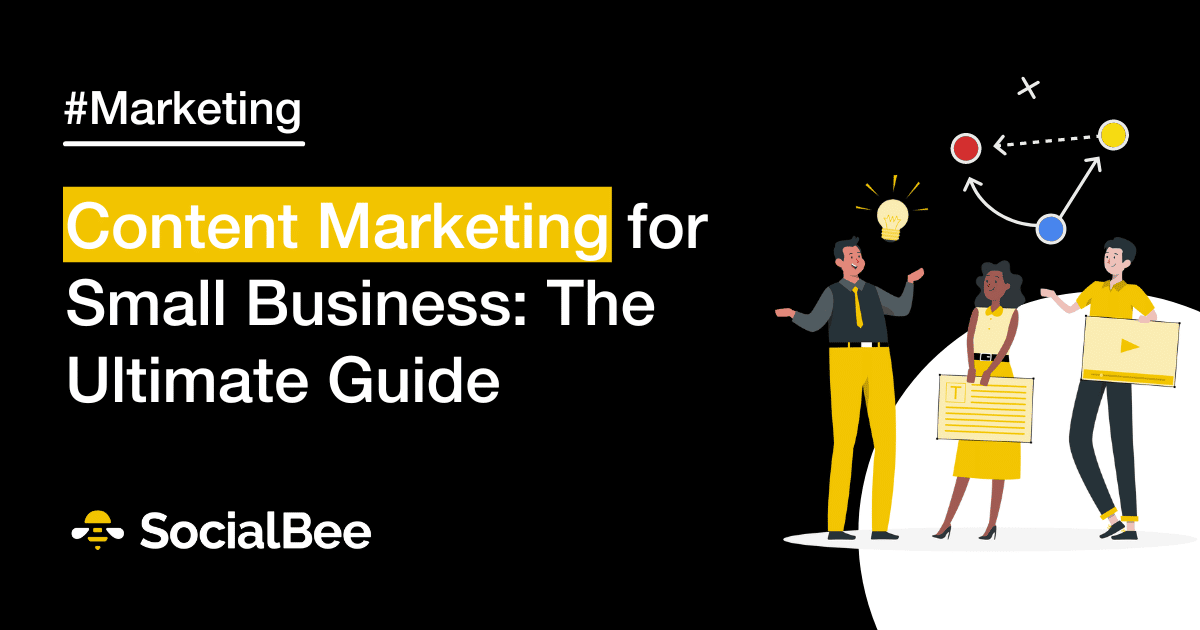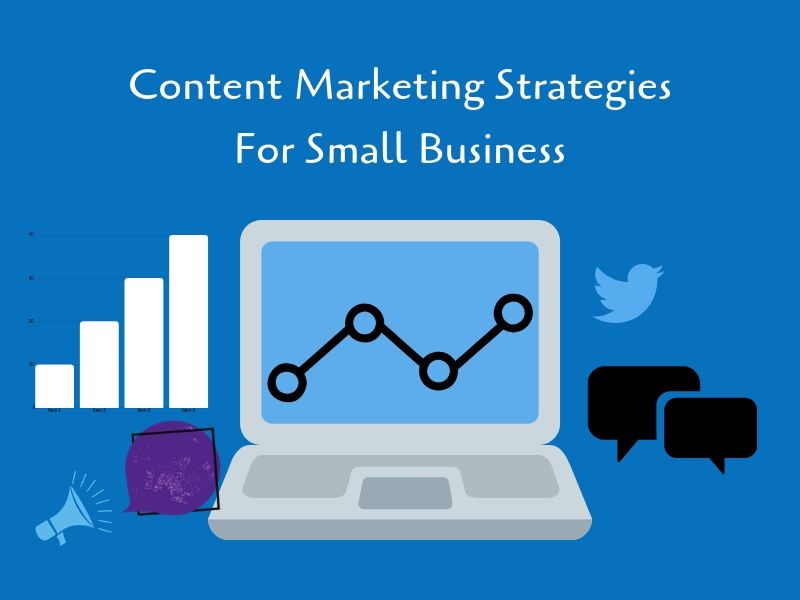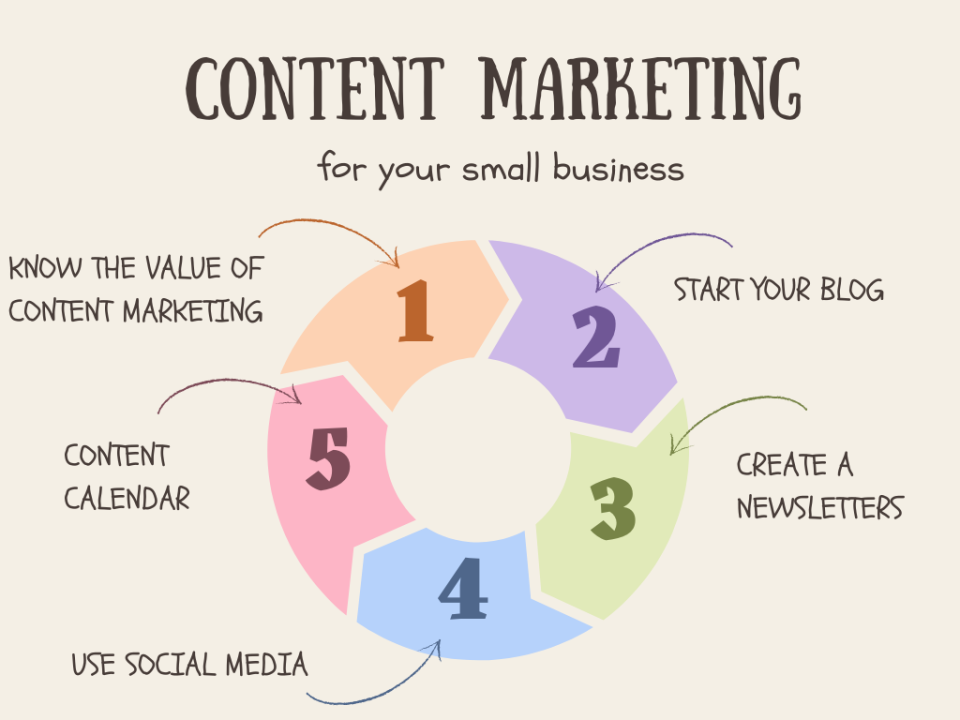Content marketing for small businesses involves creating valuable content to attract and engage target audiences. This strategy builds brand awareness and drives customer loyalty.
Small businesses often face unique challenges in marketing. Limited budgets and resources can make reaching potential customers feel daunting. Content marketing offers an affordable solution, allowing businesses to showcase their expertise while providing value. By producing blogs, videos, and social media posts, small businesses can connect with their audience effectively.
This approach not only drives traffic but also establishes trust and credibility. Engaging content encourages shares and interactions, expanding reach organically. A well-executed content marketing strategy empowers small businesses to compete with larger companies and achieve sustainable growth. Embracing this strategy can transform a small business’s online presence.

Credit: socialbee.com
The Importance Of Content Marketing For Small Businesses
Content marketing is vital for small businesses. It helps in building brand awareness. Sharing valuable content draws attention to your brand. This increases trust and loyalty among customers.
Engaging with your target audience is essential. Use social media to connect and share stories. Respond to comments and messages quickly. This shows that you care about your customers’ needs.
Regularly publishing blog posts and videos keeps your audience interested. Offer tips, how-tos, and insights about your products. This keeps potential customers coming back for more.
Setting Goals And Defining Your Audience
Setting clear business objectives is essential for success. Objectives guide your content marketing efforts. Focus on specific goals, such as increasing sales or brand awareness.
Understanding your customer demographics is equally important. Identify age, gender, location, and interests. Knowing your audience helps create tailored content.
Consider using surveys to gather information. Social media insights can also provide valuable data. Analyze your current customers to spot trends and preferences.
Use this information to refine your marketing strategies. Align your content with the needs and wants of your target audience.
Crafting A Content Marketing Strategy
Choosing the right platforms is crucial for small businesses. Focus on where your audience spends time. Popular platforms include Facebook, Instagram, and LinkedIn.
Content types serve different purposes. Use blogs to share information. Create videos for engaging storytelling. Infographics help simplify complex data.
| Content Type | Purpose |
|---|---|
| Blog Posts | Inform and educate audience |
| Videos | Engage and entertain |
| Infographics | Simplify complex information |
Choose platforms based on your goals. Track which content works best. Adjust your strategy accordingly.
Creating Valuable And Relevant Content
Storytelling helps you connect with your customers. Share real-life stories that resonate. This creates an emotional bond and builds trust. Use simple language and relatable situations. Include your brand’s journey and values.
Ensuring quality is crucial for your content. Focus on creating useful and informative pieces. Consistency also matters. Post regularly to keep your audience engaged. Use a content calendar for planning.
Monitor your audience’s feedback. This helps improve your content strategy. Keep adjusting based on what your customers want. Strong content leads to better customer relationships.
Seo Basics For Content Visibility
Keyword research is essential for reaching your target audience. Start by using tools like Google Keyword Planner or Ubersuggest. These tools help find the right keywords for your business. Focus on long-tail keywords. They attract more specific traffic and often have less competition.
On-page SEO plays a crucial role in content visibility. Use keywords in your titles, headers, and meta descriptions. This helps search engines understand your content better. Keep your content structured and easy to read. Use bullet points or tables for clarity.
| On-Page SEO Tips | Description |
|---|---|
| Title Tags | Include primary keywords in your title. |
| Header Tags | Use H1, H2, and H3 tags effectively. |
| Internal Links | Link to other relevant pages on your site. |
| Image Alt Text | Describe your images with keywords. |
Promotion Tactics To Amplify Your Content
Social media is a powerful tool for small businesses. Use platforms like Facebook, Instagram, and Twitter to engage with your audience. Share valuable content that resonates with them. Use eye-catching visuals and clear messages. Regularly post updates to keep your followers interested.
Email marketing can boost your content’s reach. Create a list of interested subscribers. Send newsletters that offer helpful tips or exclusive deals. Personalize your messages to make them more appealing. Track the results to see what works best.
Measuring Success And Analyzing Performance
Tracking key metrics helps understand your content marketing success. Focus on website traffic, conversion rates, and engagement levels. These numbers show how well your audience connects with your content.
Social media shares and comments are also important. They indicate how much your content resonates with people. Monitor email open rates to see if your messages grab attention.
Adjust strategies based on the data collected. If a specific type of content performs well, create more of it. If certain channels underperform, consider changing your approach. Testing different methods helps find what works best.

Credit: techjackie.com
Leveraging User-generated Content And Testimonials
User-generated content is a powerful tool for small businesses. It builds trust and credibility. Encourage customers to share their experiences on social media. Offer incentives like discounts or shout-outs. This creates a community around your brand.
Showcasing real stories helps potential customers connect with your business. Use testimonials on your website and social media. Share photos and videos from satisfied customers. Authentic content makes your brand relatable.
Ask customers to leave reviews after purchases. Use these reviews in your marketing. Celebrate customer milestones, like anniversaries or achievements. This shows appreciation and strengthens relationships.
Budgeting For Content Marketing
Effective content marketing requires careful budgeting. Small businesses often have limited funds. Allocating resources wisely can lead to better results.
Focus on cost-effective strategies for creating content. Use free tools for graphic design, like Canva. Write blog posts using keyword research to attract more visitors.
Consider repurposing existing content. Turn old blogs into videos or infographics. This saves time and money while reaching new audiences.
Engage your audience through social media. Share your content on platforms like Facebook and Instagram. This enhances visibility without high costs.

Credit: neilpatel.com
Content Marketing Trends And Innovations
Staying ahead in content marketing is crucial for small businesses. New platforms and formats are always emerging. Video content continues to grow in popularity. Live streaming helps connect with audiences in real time. Podcasts are gaining traction, offering a personal touch. Businesses can share stories and insights easily through audio. Social media remains vital. Short videos on platforms like TikTok engage younger audiences. Infographics simplify complex information visually. Businesses should explore interactive content to boost engagement. Quizzes and polls can attract more users. User-generated content builds trust and community. Encouraging customers to share experiences can enhance visibility. Staying updated with these trends is essential for success.
Common Challenges And Solutions In Content Marketing
Small businesses often face limited resources for content marketing. This can lead to challenges in creating quality content. Focus on efficient strategies to maximize impact.
Consider using user-generated content. This helps save time and builds community. Collaborate with customers to share their stories. This approach can generate authentic content.
Dealing with content saturation is another challenge. Many businesses produce similar content. To stand out, focus on a unique brand voice. Create content that reflects your values and mission.
Utilize niche topics to attract specific audiences. Research trending subjects that align with your business. This can help you gain visibility and engagement.
Frequently Asked Questions
What Is Content Marketing For Small Businesses?
Content marketing for small businesses involves creating valuable content to attract and engage customers. This strategy builds brand awareness and fosters customer loyalty. It can include blogs, social media posts, videos, and newsletters. Ultimately, effective content marketing drives traffic and boosts sales while establishing your authority in the industry.
How Can Small Businesses Benefit From Content Marketing?
Small businesses can benefit from content marketing by increasing visibility and enhancing customer relationships. It helps in educating potential customers about products or services. Additionally, valuable content can improve search engine rankings and generate leads. Overall, it’s a cost-effective way to promote your brand and build trust.
What Types Of Content Should Small Businesses Create?
Small businesses should create various types of content, including blogs, infographics, and videos. Educational articles can inform customers about industry trends. Social media posts foster community engagement, while newsletters keep customers updated. Diversifying content formats can reach a wider audience and maintain interest.
How Often Should Small Businesses Publish Content?
Small businesses should aim to publish content consistently, ideally once a week. Regular updates keep your audience engaged and improve SEO rankings. However, quality matters more than quantity. Focus on delivering valuable and relevant content rather than overwhelming your audience with frequent posts.
Conclusion
Effective content marketing can transform your small business. By creating valuable, engaging content, you build trust and attract customers. Focus on understanding your audience’s needs. Utilize various platforms to share your message. Embrace consistency and creativity to stand out. Start implementing these strategies today for lasting growth and success.



